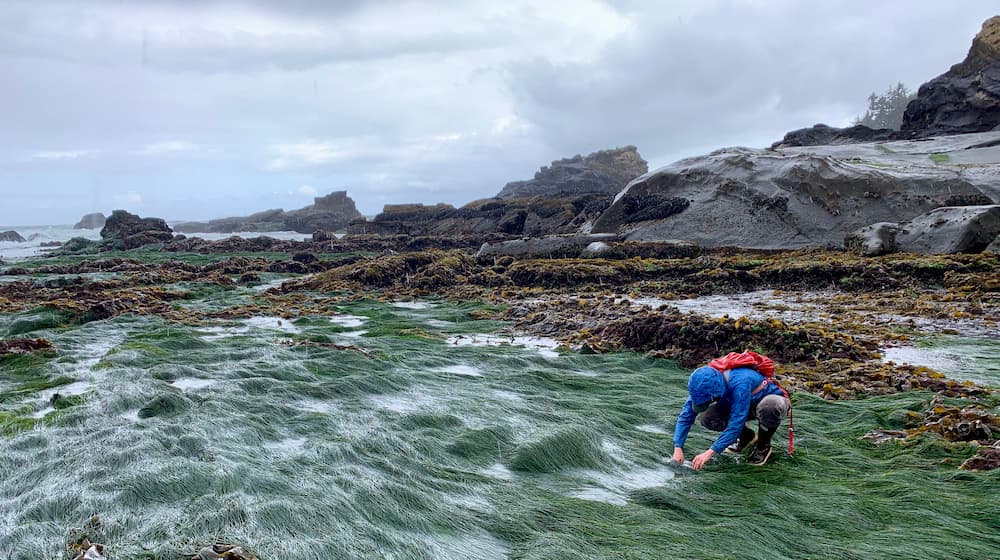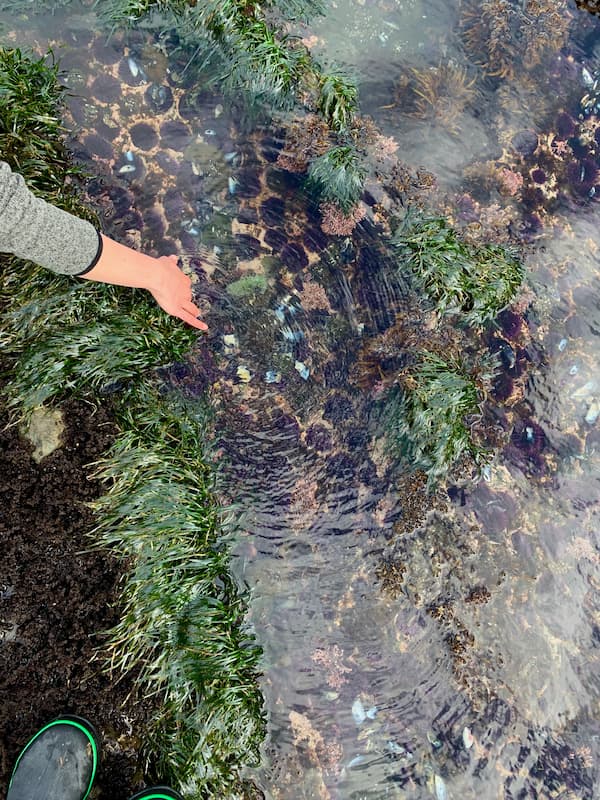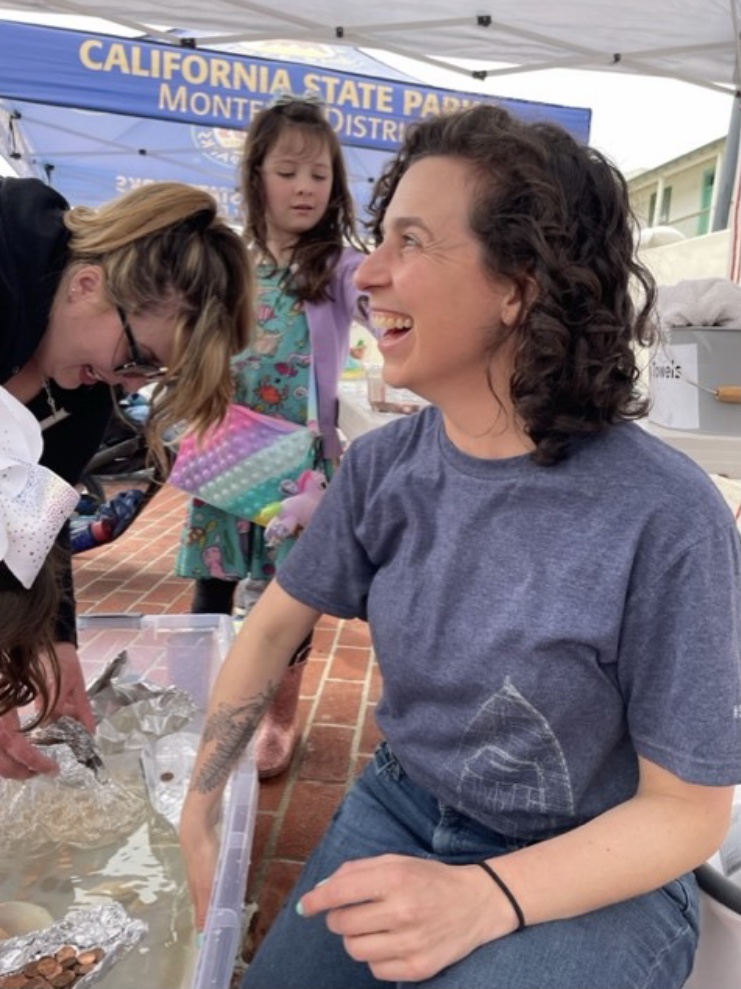By Dr. Rebecca Mostow, Education Manager

I was gifted my first copy of Between Pacific Tides—Ed Ricketts’s and Jack Calvin’s field guide to intertidal invertebrates—a few years after I graduated from college. By 2018, when I arrived at the Hatfield Marine Science Center in Newport, Oregon, my book was decorated with annotations from a field season in Southeast Alaska, wrinkled with the drips of a leaky aquarium in Port Townsend, Washington, and dog-eared with evidence of my late-night ideas and consultations. When I pulled it out to read aloud to the gathered college students, I noticed again that it was a book carrying many stories.

I cleared my throat and started to read aloud from John Steinbeck’s 1948 foreword, projecting over the sounds of running seawater and slurping outflows: “There are good things to see in the tidepools and there are exciting and interesting thoughts to be generated from the seeing. Every new eye applied to the peep hole which looks out at the world may fish in some new beauty and some new pattern, and the world of the human mind must be enriched by such fishing.” The room full of Oregon State University students listened with rapt attention.
That spring, as my Marine Biology and Ecology students explored mudflats and tide pools, I saw them return to Between Pacific Tides time and time again for inspiration and information. The students searched its pages for holes in the research or mysteries to be solved (“the knowledge is not final, and any clear eye and sharp intelligence may see something we have never seen,” pg. xi). They laughed at the authors’ interactions with strange animals (on eating the gumboot chiton: “we decided to reserve the animals for times of famine,” pg. 103) and they sighed at the creative, dynamic writing that reflected their own enthusiasm for the subject (“sea gulls also eat a few [Pisaster ochraceus], but they are easily forgiven; it must be a hungry gull indeed to tackle such an unrewarding chore,” pg. 217). As my students read, I saw that once again Ed Ricketts’s legacy was capturing the minds of a new generation of marine ecologists.
Since that first experience teaching Between Pacific Tides, I have repeatedly incorporated its content and its spirit into my curriculum development, my scientific research, and my community outreach. Here at the Western Flyer Foundation, I am thrilled to continue living into the legacy of Ed Ricketts and John Steinbeck by designing and teaching cross-disciplinary programs that encourage collaboration between students and professionals in arts, sciences, and humanities.
My goals for the Western Flyer Foundation education programs are as follows:
1. Programs integrate science and at least one of the following: creative writing, history, visual arts. This means that no student is only a scientist. Every course is infused with the influence of the Steinbeck-Ricketts friendship and is therefore interdisciplinary.
2. Programs are responsive to student interests and questions as well as to student background knowledge and preparation. This means programs are scalable, flexible and can work for students with a range of ages and educational backgrounds. We recognize that students will find different aspects of the Western Flyer story inspiring; some will be excited about deploying the ROV while others will be moved by meeting a working visual artist. We aim to empower our students to direct their own learning as much as is feasible.
3. Programs are built around learning outcomes that include each of the following: skill growth, knowledge acquisition, and emotional development. This means that no WFF programs will be built exclusively around disciplinary teaching or content level takeaways. Instead, our programs center around helping participants develop skills, science, and art identity, and understanding of larger scale concepts.

In my first few months with WFF I’ve already begun to plan and teach programs that meet these goals: I’ve built my network of partner organizations and schools, re-launched our popular Community Journal Project, helped plan and execute the annual Cannery Row Days, and directly served over 500 hundred community members. Between Pacific Tides profoundly shaped my development as a scientist and educator by stoking a love of exploration, the intertidal, and nature writing. It is a joy and an honor to carry on the science education legacy of Ed Ricketts as a member of the Western Flyer Foundation.
Posted in Blog, Education